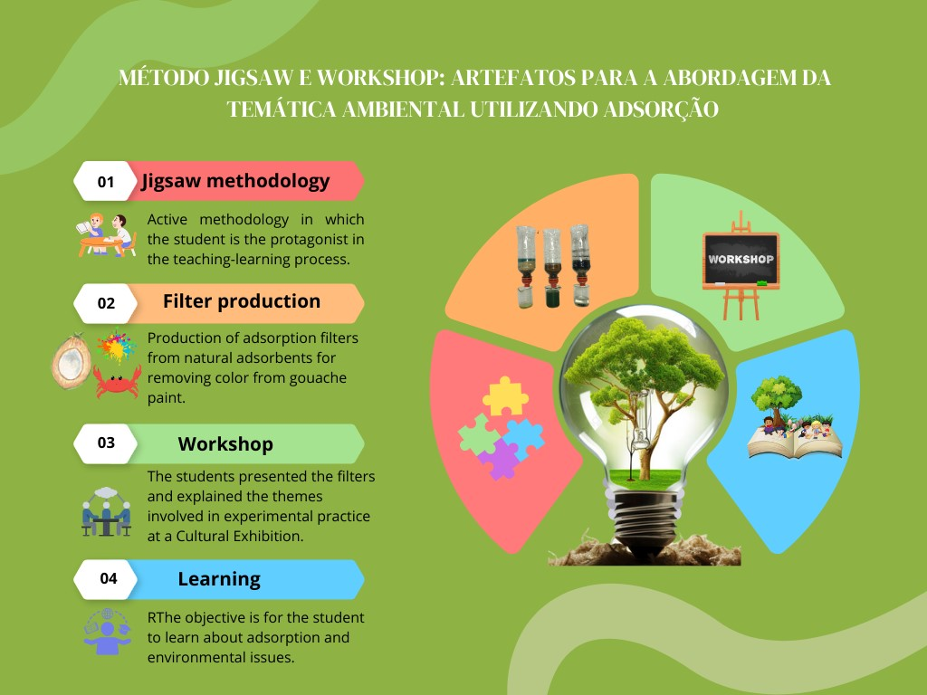JIGSAW METHOD AND WORKSHOP: ARTIFACTS FOR ADDRESSING ENVIRONMENTAL THEMES USING ADSORPTION FILTERS
DOI:
https://doi.org/10.36524/ric.v10i2.2501Keywords:
chemistry teaching; adsorption; gouache paint; environmental education.Abstract
Chemistry teaching is often based on learning by memorization, which makes the content difficult to understand. One of the ways to make classes more interesting is by using experiments and active learning methodology. This work presents the application of the Jigsaw teaching methodology, and the development of a low-cost experiment, using accessible materials, which was presented by students in a workshop. The work was developed with students in the 2nd year of High School of a public school at the district of Cariacica, at Espírito Santo. The objective was to work on environmental issues, promoting learning based on an active methodology, and the production of adsorption filters, using the Jigsaw method. Green coconut mesocarp with different particle sizes, chitosan, and activated carbon were used as adsorbent materials, where the removal of gouache paint in water produced in a school environment was observed by visual analysis. Verification of learning was obtained through the application of a pre-test that showed the students' prior knowledge on the topic, and a post-test, verifying the acquisition of new concepts.
Downloads
Published
Issue
Section
License
Copyright (c) 2024 Revista Ifes Ciência

This work is licensed under a Creative Commons Attribution-NonCommercial-NoDerivatives 4.0 International License.
Autores que publicam nesta revista concordam com os seguintes termos:
- Autores mantém os direitos autorais e concedem à revista o direito de primeira publicação, com o trabalho simultaneamente licenciado sob a Licença Creative Commons Attribution que permite o compartilhamento do trabalho com reconhecimento da autoria e publicação inicial nesta revista.
b. Autores têm permissão e são estimulados a publicar e distribuir seu trabalho online (ex.: em repositórios institucionais ou na sua página pessoal) a qualquer ponto antes ou durante o processo editorial, já que isso pode gerar alterações produtivas, bem como aumentar o impacto e a citação do trabalho publicado (Veja O Efeito do Acesso Livre).


